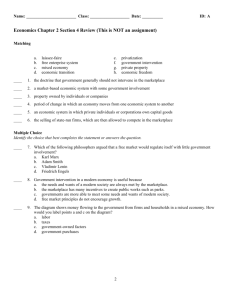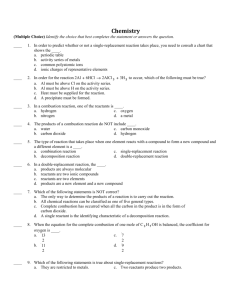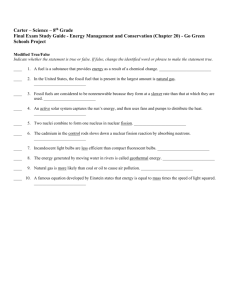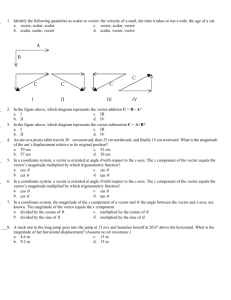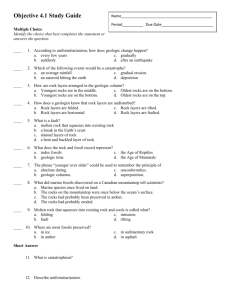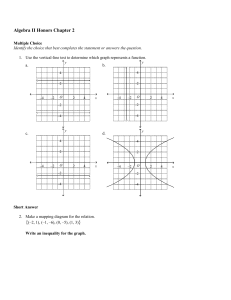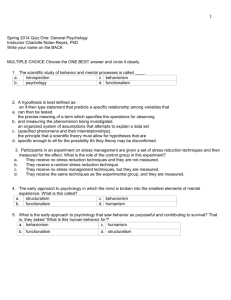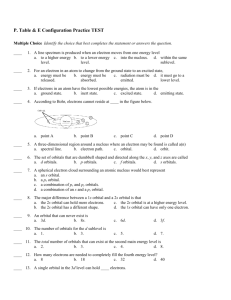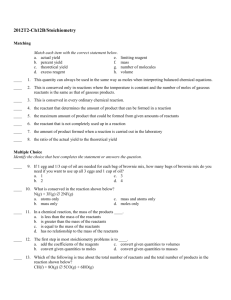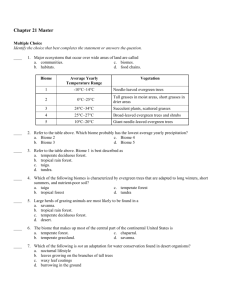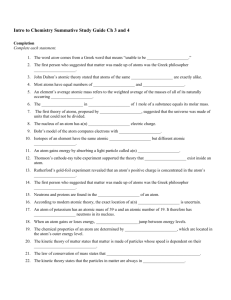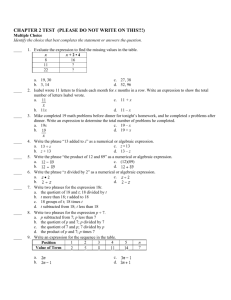Chapter 3 Study Guide Short Answer 1. The three values 10.714 m
advertisement
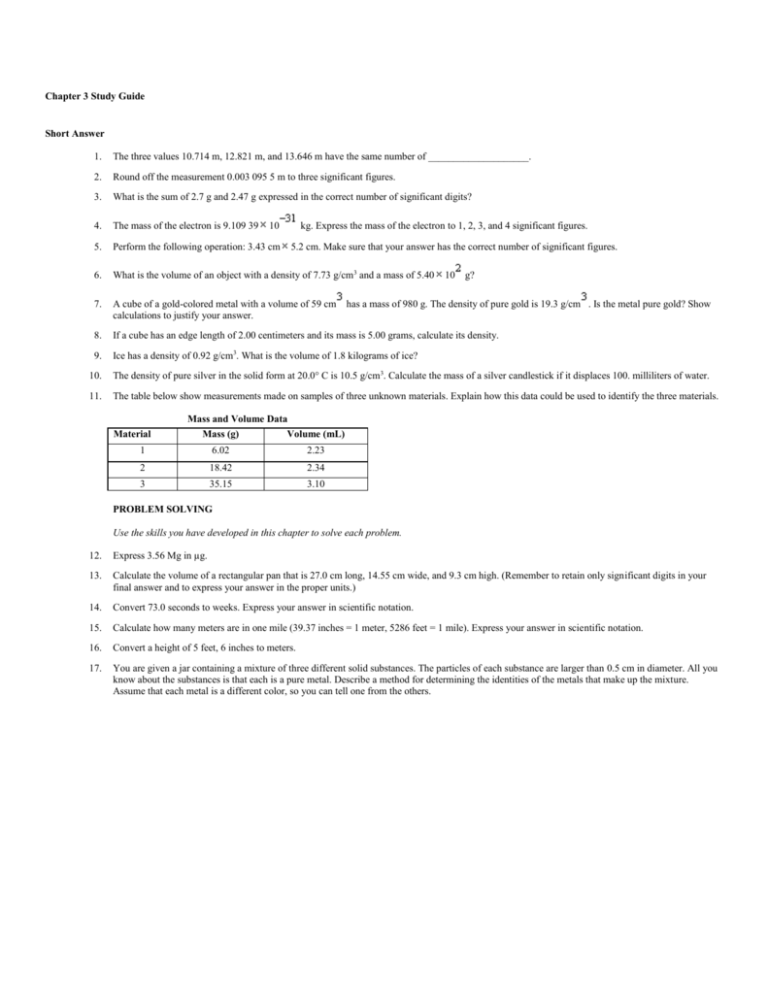
Chapter 3 Study Guide Short Answer 1. The three values 10.714 m, 12.821 m, and 13.646 m have the same number of ____________________. 2. Round off the measurement 0.003 095 5 m to three significant figures. 3. What is the sum of 2.7 g and 2.47 g expressed in the correct number of significant digits? 4. The mass of the electron is 9.109 39 5. Perform the following operation: 3.43 cm 6. What is the volume of an object with a density of 7.73 g/cm3 and a mass of 5.40 7. A cube of a gold-colored metal with a volume of 59 cm has a mass of 980 g. The density of pure gold is 19.3 g/cm . Is the metal pure gold? Show calculations to justify your answer. 8. If a cube has an edge length of 2.00 centimeters and its mass is 5.00 grams, calculate its density. 9. Ice has a density of 0.92 g/cm3. What is the volume of 1.8 kilograms of ice? 10 kg. Express the mass of the electron to 1, 2, 3, and 4 significant figures. 5.2 cm. Make sure that your answer has the correct number of significant figures. 10 g? 10. The density of pure silver in the solid form at 20.0° C is 10.5 g/cm3. Calculate the mass of a silver candlestick if it displaces 100. milliliters of water. 11. The table below show measurements made on samples of three unknown materials. Explain how this data could be used to identify the three materials. Material Mass and Volume Data Mass (g) Volume (mL) 1 6.02 2.23 2 18.42 2.34 3 35.15 3.10 PROBLEM SOLVING Use the skills you have developed in this chapter to solve each problem. 12. Express 3.56 Mg in µg. 13. Calculate the volume of a rectangular pan that is 27.0 cm long, 14.55 cm wide, and 9.3 cm high. (Remember to retain only significant digits in your final answer and to express your answer in the proper units.) 14. Convert 73.0 seconds to weeks. Express your answer in scientific notation. 15. Calculate how many meters are in one mile (39.37 inches = 1 meter, 5286 feet = 1 mile). Express your answer in scientific notation. 16. Convert a height of 5 feet, 6 inches to meters. 17. You are given a jar containing a mixture of three different solid substances. The particles of each substance are larger than 0.5 cm in diameter. All you know about the substances is that each is a pure metal. Describe a method for determining the identities of the metals that make up the mixture. Assume that each metal is a different color, so you can tell one from the others. Chapter 3 Study Guide Answer Section SHORT ANSWER 1. ANS: significant figures PTS: 1 ANS: 0.003 10 m DIF: L2 OBJ: 1.3.3 BLM: comprehension 2. PTS: ANS: 5.2 g 1 DIF: L2 REF: p. 68 OBJ: 3.1.3 3. PTS: ANS: 1 DIF: L2 REF: p. 63 | p. 70 OBJ: 3.1.3 one: 9 10 PTS: ANS: 1 4. 5. 3.43 cm 6. PTS: ANS: kg; two: 9.1 10 PTS: ANS: 10 kg; four: 9.109 10 kg DIF: L2 REF: p. 63 | p. 71 OBJ: 3.1.3 DIF: L2 REF: p. 68 | p. 71 OBJ: 3.1.3 REF: p. 91 OBJ: 3.4.1 REF: p. 90 | p. 91 OBJ: 3.4.1 5.2 cm = 18 cm 1 Volume = mass / density = (5.40 7. kg; three: 9.11 1 DIF: 10 g) / 7.73 g/cm = 69.9 cm L2 No; mass/volume = 980 g/59 cm = 17 g/cm 8. 9. 10. 11. 12. PTS: 1 DIF: L3 ANS: density = mass ÷ volume density = 5.00 grams ÷ (2.00 cm 2.00 cm 2.00 cm) density = 5.00 grams ÷ 8.00 cm3 density = 0.625 g/cm3 PTS: 1 DIF: intermediate REF: chapter 17 | section 17.1 ANS: density = mass volume volume = mass density mass = 1.8 kg, or 1,800 g volume = 1,800 g 0.92 g/cm3 volume = 1,957 cm3 (2.0 L with correct number of significant digits) PTS: 1 DIF: intermediate ANS: density = mass ÷ volume mass = density volume mass = 10.5 g/cm3 100. cm3 mass = 1050 grams or 1.05 kilograms The mass of the silver candlestick is 1.05 kilograms. REF: chapter 17 | section 17.2 PTS: 1 DIF: advanced REF: chapter 17 | section 17.2 ANS: The density of each sample could be calculated. Then each value could be compared to known values to identify the substances. PTS: 1 DIF: III REF: 2 OBJ: 4 ANS: M stands for mega-, which means 1,000,000. µ stands for micro-, which means 0.000001, or 10–6, so there are 1,000,000, or 106, micrograms per gram. Converting megagrams to grams: 3.56 Mg 1,000,000 g = 3,560,000 g, or 3.56 106 g 1 Mg Converting grams to micrograms: 3.56 106 g 106 µ = 3.56 1012 µ 1g 13. PTS: 1 OBJ: 1A 1.d ANS: volume = length width height = 27.0 cm 14.55 cm 9.3 cm = 3653.505 cm3, which must be rounded to two significant digits to match the uncertainty in 9.3 cm, so the final answer should be reported, after rounding, as 3700 cm3, or 3.7 103 cm3. PTS: ANS: 1 OBJ: 1A 1.g 14. PTS: ANS: 1 OBJ: 1A 1.j 15. PTS: ANS: 1 OBJ: 1A 1.j 16. 17. PTS: 1 OBJ: 1A 1.j ANS: Each substance is a pure metal, so they should be identifiable by determining their densities. Separate the solids by color into three separate batches. Determine the mass of each metal using a balance. Determine the volume of each metal as follows. Immerse each metal in a measured volume of a suitable liquid in a graduated cylinder. Measure the volume of the liquid plus the metal. Calculate the difference between the volume of the liquid plus the metal and the liquid by itself. To calculate the density, divide the mass of each metal by its volume. Compare the density and color of each metal to the density and color listed in reference books. PTS: 1 DIF: L3 REF: p. 90 OBJ: 3.4.1








